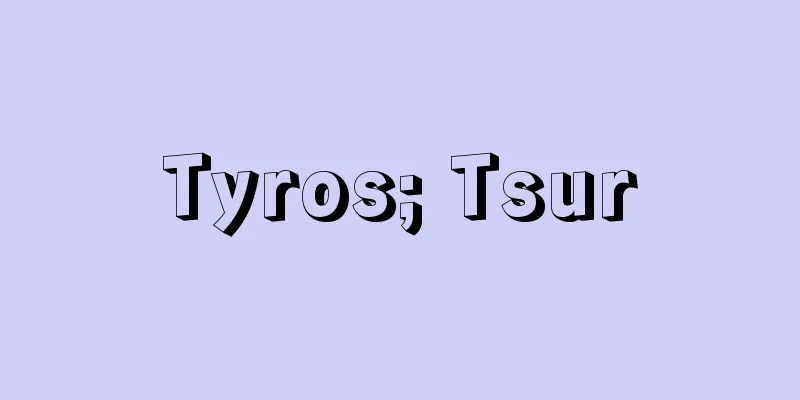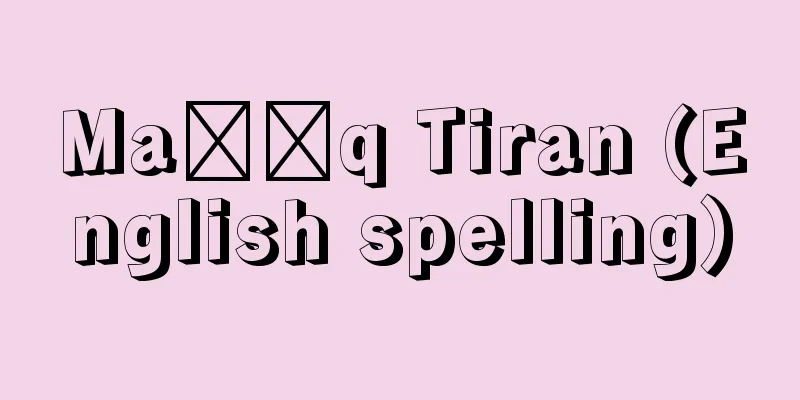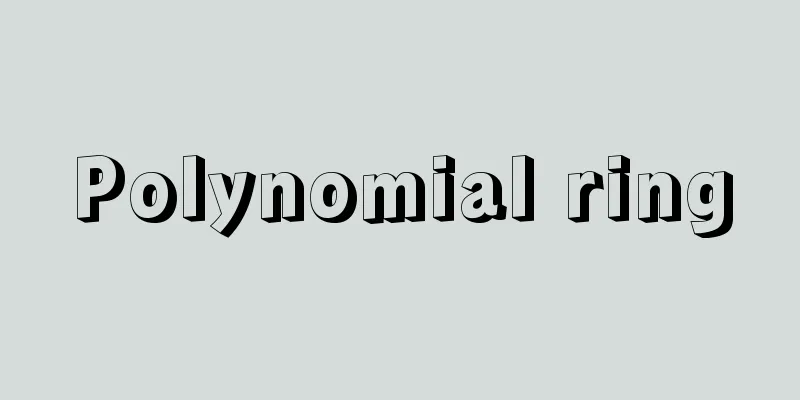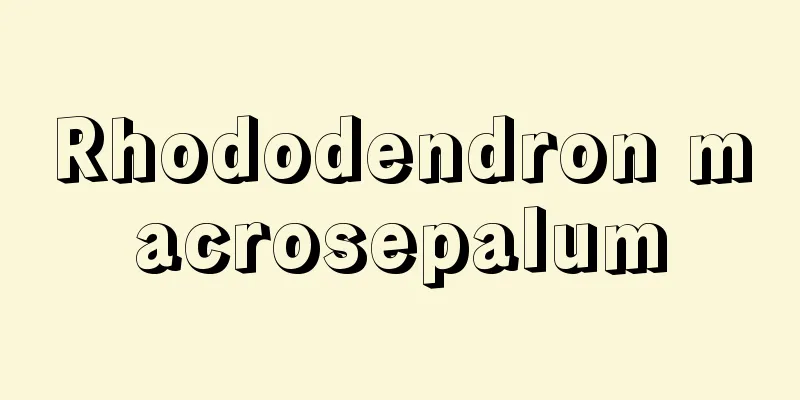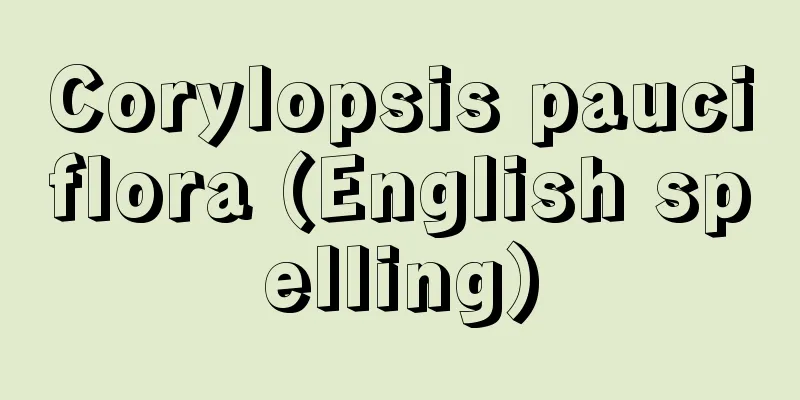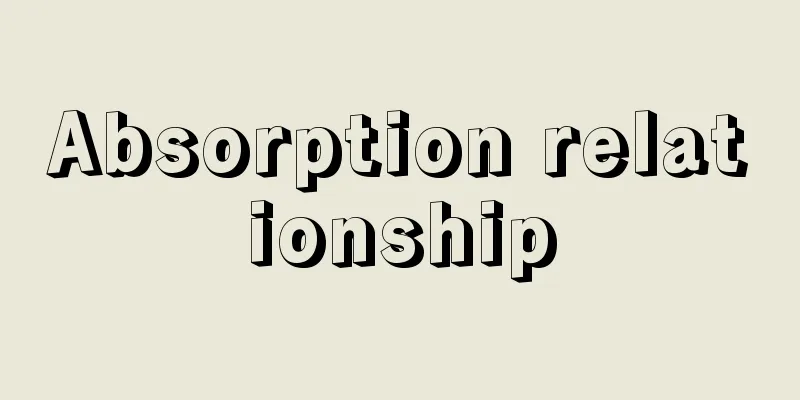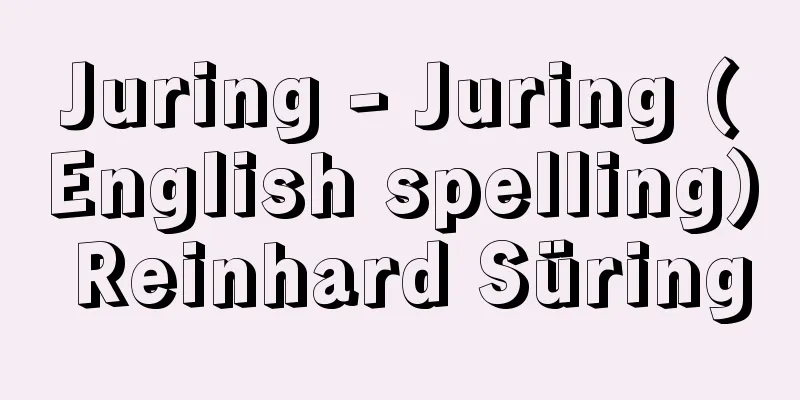Writing education - sakubunkyoiku (English spelling)

|
This refers to education that teaches students the ability to write (create sentences with the purpose of conveying information). Composition education includes teaching writing skills such as distinguishing between facts and opinions, and writing sentences according to genre, as well as instruction in rereading written texts, revising (searching for and selecting words), and refining (organizing and polishing sentences). Composition education is often taught at the elementary, middle, and high school levels, but with an increasing number of university students unable to write reports or papers, there is a growing recognition among university officials that composition education is also necessary for university students. This article describes composition education for university students. [Necessity and issues of developing writing skills in university students] Due to the increase in the rate of university enrollment, globalization, and requests from the industrial sector, the need for quality assurance in university education has become strongly recognized. In this context, many universities are considering developing writing and report writing skills as essential issues for university students. Writing university-level reports involves a variety of abilities, including not only logic but also creativity, communication skills, critical thinking, and media literacy. It is possible that these 21st century abilities can be developed through report writing education. University reports are said to consist of a problem, an argument, and evidence. The problem is the issue that is addressed in the report, the argument is one's own argument regarding the problem, and the evidence refers to the facts and reasoning that support the argument. Students are required to arrange these logically and present them in an argument. From this, we can see that two things must be addressed in university writing education. The first is education on what to write, i.e., "problem setting," and the other is education on how to write, i.e., "argument." [Education and support for problem setting] The most difficult part of writing a report is deciding "what" to write. This includes deciding what to take up as the problem, how to argue, and what evidence to use. Collectively, these are called problem setting. When formulating a problem, it is necessary to refine vague assertions or interests into provable propositions, i.e., propositions for which evidence can be obtained. At this time, it is important to organize the points of argument in advance, i.e., to do sufficient planning. It is also known that better reports can be written by using methods for externalizing thoughts, such as bullet points or concept maps, rather than thinking only in one's head. In order to set problems, it is essential to read related literature. When reading, it is important to understand things better by underlining and taking notes rather than just reading vaguely. In particular, when reading for the purpose of writing a report, it is not enough to simply understand exactly what is written, as in normal reading. It is necessary to check the logic and validity of what is written and to deepen one's own thoughts by reflecting on one's understanding. This type of reading is called critical reading. Critical reading is, of course, closely related to critical thinking. It involves grasping the structure of the literature (problem, argument, evidence), identifying hidden assumptions, and checking the types of evidence and their validity. Understanding the problems in previous research through these means will facilitate problem setting. However, in the early stages, there is a lack of relevant knowledge, so it is often difficult to apply critical thinking effectively. In such cases, recording your intuitive judgments in the form of underlining or notes will have a positive effect on subsequent report writing. Collaborative learning is also effective in setting a problem and understanding what to write about. Collaborative learning involves cooperative discourse in the course of achieving a group goal, which leads to mutual monitoring in which participants consider their own understanding and that of others. These techniques are effective for writing reports. For example, the jigsaw technique, in which members of a group share the responsibility of reading various documents related to the phenomenon being addressed and then synthesize the results to deepen their understanding, has been shown to be effective in discovering, selecting, and organizing the content to be written about. [Education and support for essay writing] Once the problem has been defined and candidates for what to write have been created, it is time to turn it into actual writing. There is a certain format for essay writing, and writing should be done according to it. For example, academic papers are generally written in the IMRAD format, that is, introduction, method, result, and discussion. This structure is essential for experimental papers. Toulmin, S. (1958) proposed a general diagram of argument in The Uses of Argument, which is useful when writing reports and papers in general. It consists of claim, data, warrant, backing, refutation, and qualification. When making a claim, data that supports it is necessary. Furthermore, guarantees and support for the relationship between the data and the claim are required. Also, since there are exceptions to claims in most cases, it is necessary to refute the weak points of the claim yourself, and based on that, to qualify the initial claim or to make a refutation. There is also a simplified version of the diagram that uses only the first half of the formula (claim, data, guarantee), which is sometimes called triangular logic. Teaching this type of pattern has been known to improve the quality of reports. Some methods of developing writing skills incorporate collaborative learning. One method is peer review, where learners evaluate and comment on each other's reports. This is known to increase the number of students writing in a set format, without the need to directly teach the format. Research is also underway into using ICT (information and communication technology) to achieve this. It is known that using such methods not only reduces the effort required for teachers to correct papers, but also has the same effect as a teacher correcting them. → Psychology of Composition [Suzuki Hiroaki] Latest Sources Psychology Encyclopedia Latest Psychology Encyclopedia About Information |
|
作文(情報を伝えることを目的とし,文章を作ること)能力を習得させるための教育を指す。作文教育には,事実と意見を書き分ける,ジャンルに合わせて文章を書き分ける,などの作文技能の教育,および書いた文章を読み返す推敲(ことばを探す,選ぶ)や彫琢(文章を整え,磨く)の指導も含まれている。作文教育は小学校・中学校・高校の段階で行なわれることが多いが,レポートがまとめられないとか,論文をまとめられないという大学生が増える状況にあることから,大学生にも作文教育が必要であるとの認識が大学関係者の間でも広がっている。本項では,大学生のための作文教育について述べる。 【大学生の作文力育成の必要性と課題】 大学進学率の上昇,グローバル化,産業界からの要請などにより,大学教育の質保証の必要性が強く認識されるようになってきた。こうした動向の中で大学生の作文教育,レポートライティング力の育成は,多くの大学で必須の課題としてとらえられている。大学レベルのレポート作成には,論理性だけではなく,創造性,コミュニケーション力,批判的思考,メディア・リテラシーなど,さまざまな能力が関与する。レポートライティングの教育を通して,これら21世紀型の能力が育成される可能性もある。大学でのレポートは問題,主張,根拠から成るとされる。問題とはそのレポートで取り上げる問題であり,主張とはその問題に対する自らの主張であり,根拠とは主張を支える事実や推論を指す。そしてこれらを論理的に配列し,論述することが求められる。ここから大学生の作文教育では二つの事柄が取り上げられねばならないことがわかる。一つ目は,何を書くか,すなわち「問題設定」についての教育であり,もう一つはどう書くか,すなわち「論述」についての教育である。 【問題設定についての教育と支援】 レポートの作成において,最も困難な部分は「何」を書くかを決定することである。ここでは問題として何を取り上げるのか,どう主張するのか,そしてどのような根拠を選び出すかが含まれる。これらをまとめて問題設定とよぶことにする。 問題設定では漠然とした主張や関心を論証可能な,すなわち論拠が得られる命題へと洗練することが求められる。このとき,論点を事前に整理すること,すなわちプランニングを十分に行なうことが重要である。また頭の中だけで考えるのではなく,箇条書きや概念地図などの思考の外化手段を用いることで,より良いレポート作成が可能になるという知見がある。 問題設定のためには,関連文献を読むことが欠かせない。読解の際に,ただ漠然と読むのではなく,下線を引いたり,メモを残すことが理解にとって重要である。とくにレポート作成を目的としたときの読みは,通常の読みのように書かれていることを正確に理解するだけでは十分ではない。そこでは書かれてあることの論理性や妥当性をチェックしたり,自らの理解を反省したりしながら,自分の考えを深めることが求められる。こうした読みは批判的読みcritical readingとよばれている。 批判的読みには当然ながら批判的思考が密接に関係している。文献の構造(問題,主張,根拠)をとらえること,隠れた前提を探し出すこと,そして根拠の種類とその妥当性をチェックすることなどが含まれる。これらを通して先行研究の問題点を把握することは問題設定を促進する。ただ初期段階では関連知識が不足しているため,批判的思考をうまく働かせることは困難な場合も多い。こうした場合には,直感的な判断を下線やメモの形で残していくことが,その後のレポート作成に良い影響を与える。 また問題設定や書くべき対象の理解に関しては,協調学習も有効である。協調学習はグループの目標達成の中で,協調的談話を行ない,そこで自分の理解や他者の理解を検討する相互モニターが生じる。これらはレポート作成にとって有効である。たとえば,取り上げる現象にかかわるさまざまな文献をグループ内で分担して読み合い,それを統合して理解を深めるジグソー法jigsaw techniqueは,書くべき内容の発見,選択,組織化に有効であるという知見がある。 【論述についての教育と支援】 問題設定が終わり,書くべきことの候補ができあがると,それを実際の文章にする段階になる。論述にはある種の形式が存在し,それに従って書くことが求められる。たとえば,学術論文は一般にIMRAD形式,すなわち導入introduction,方法method,結果result,そしてand討論discussionで書かれることになる。実験的な論文である場合には,この構成は必須である。トゥールミンToulmin,S.(1958)は『議論の技法The Uses of Argument』において議論の一般図式を提案したが,この図式はレポートや論文一般を作成する際に有用である。これは主張claim,データdata,保証warrant,裏づけbacking,反論refutation,限定qualificationから成る。ある主張を行なうときには,それをサポートするデータが必要である。さらに,データと主張との間の関連性についての保証や裏づけが必要となる。また,主張には例外があるケースがほとんどであることから,主張のウィークポイントについて自ら反論を行ない,それに基づいて初期の主張を限定する,あるいは再反論を行なう必要がある。この前半部分(主張,データ,保証)だけを用いた,簡易版の図式もあり,これは三角ロジックとよばれることがある。こうした型を教えることでレポートの質が高まることが知られている。 論述力の育成の方法として,協調学習を取り入れたものもある。学習者同士が各自のレポートを評価,コメントし合う相互レビューpeer reviewという方法がある。これによって型を直接教えなくても,型に従った論述が増加することが知られている。また,これらをICT技術(情報・通信技術)を用いて行なう研究も進んでいる。こうした方法を用いることで,教師の添削にかかわる労力が軽減されるだけでなく,教師の添削と同等の効果が得られるという知見もある。 →作文心理学 〔鈴木 宏昭〕 出典 最新 心理学事典最新 心理学事典について 情報 |
Recommend
British Airways [company] - British Airways
A British airline. Its airline code is BA. It was ...
D'Arcy, William Knox
Born: October 11, 1849. Died: May 1, 1917. Stanmor...
Okuma [town] - Ookuma
A town in Futaba County, central Hamadori, eastern...
Taiji Kawajiri
1914-1994 A puppet theater troupe leader and dire...
Kingdom of Alba
…The original inhabitants lived in the north and ...
Law of Octaves
…Later, Alexandre Émile Béguyer de Chancourtois (...
Onari
...Under the direction of a leader called the &qu...
perocyclic reaction
… [Takeuchi Takahito]. … *Some of the terms that ...
Protagonist - protagonist
〘noun〙① A word to show respect to one's master...
Groundwater - Chikasui (English spelling)
Groundwater is water that exists underground and ...
Four Noble Truths - I want to
The central term in Buddhism. It is also called t...
Abruzzi - Abruzzi (English spelling)
1873‐1933 Italian naval officer, mountaineer, and ...
SEC - Security Commerce
The American Securities and Exchange Commission. I...
Lunar Society of Birmingham
A private scientific research society founded in B...
Japanese clothing - wafuku
It is a general term for traditional Japanese clo...
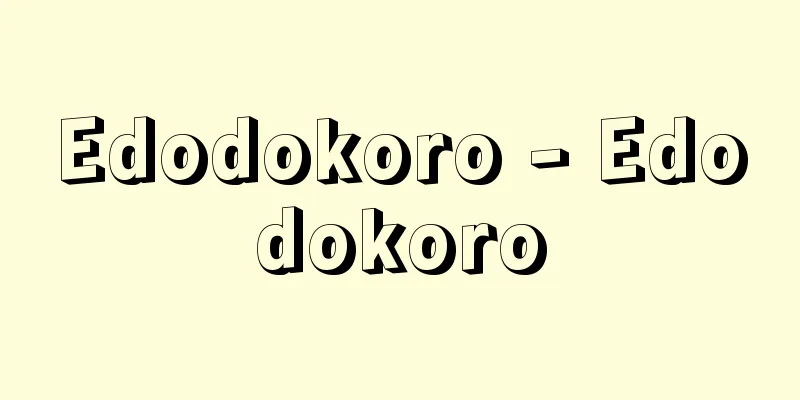
![Ijuin [town] - Ijuin](/upload/images/67cae92a07e57.webp)
